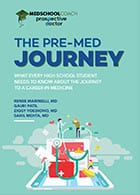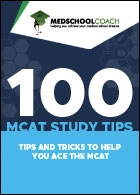
Table of Contents
What Are Casper, Duet, and Snapshot?
In navigating your medical school application journey, you may come across schools that require the Altus Suite of tests, which include Casper, Duet, and (formerly) Snapshot. These are non-academic assessments that many medical programs in the United States use as a part of their admissions process.
This group of assessments helps admissions committees understand candidates beyond their academic achievements. Think of these assessments as your digital interview panel, each with a unique lens on who you are. There are no wrong answers!
Here’s what they measure:
- Casper: A situational judgment test that assesses an applicant’s ability to navigate complex, real-world scenarios, focusing on ethical decision-making, empathy, and critical thinking.
- Duet: A value-alignment assessment designed to match applicants’ personal values and preferences with the ethos and culture of prospective medical schools.
- Snapshot: A video response tool aimed at gauging communication skills and personal motivation. After the 2022/23 application cycle, no medical schools require Snapshot.
The AAMC PREview is a similar assessment tool to help medical school admissions understand the cognitive and value-based aspects of applicants’ profiles. Some medical programs will accept either the PREview exam or Casper, but it’s unlikely that a program will require you to take both.
Read Next: 2025/26 TMDSAS Application Guide for Prospective Doctors
These types of get-to-know-you admissions requirements show the value medical programs place on competencies and problem-solving in addition to academic metrics like GPA and MCAT scores.
Need help preparing for Casper? Work 1-on-1 with a former admissions committee member.
Casper Format
Casper is a timed test that assesses your situational judgment through a mix of video-based and written scenarios followed by open-ended questions. Expect 60-90 minutes to complete Casper.
Casper has 2 sections. Each section is designed to gauge how you analyze situations, think critically, and communicate your reasoning:
- Video response section: This consists of 2 word-based scenarios and 4 video-based scenarios. After each of these scenarios, test-takers will use a webcam to record a video response to 2 open-ended questions. For each of these video responses, you will have 10 seconds to read the question and then one minute to record your response.
- Typed response section: This consists of 3 word-based and 5 video-based scenarios. After each of these scenarios, test-takers will be presented with 3 open-ended questions. You will have 5 minutes total to type your response to all 3 questions before moving on to the next scenario.
The test automatically advances from one section to the next and offers an optional 15-minute break midway.
How to Prepare for Casper
- Familiarize yourself with the test structure: Understand the flow and timing of both the video and typed response sections to manage your time effectively during the test.
- Practice ethical decision-making: Review basic ethical principles and frameworks. Being comfortable with these concepts can help you articulate well-thought-out responses.
- Reflect on real-life scenarios: Consider how you’ve dealt with challenging situations in the past. Reflecting on these experiences can provide a solid foundation for your responses.
- Mock tests: Engage in simulated Casper tests to acclimate to the test environment and format. This can also help ease test-day anxiety.
- Seek feedback: Get feedback on your practice responses from mentors or peers to gain different perspectives and improve.
Related: 121 MMI Sample Questions (Plus, How To Answer) – ProspectiveDoctor
Duet Format
Duet is an untimed computer-based test that takes approximately 15 minutes to complete and has around 100 multiple-choice questions.
It’s designed to assess how your values align with potential medical schools through a series of questions, matching your preferences and values with the school’s mission. Schools that require Duet use this assessment to ensure applicants share these values.
How to Prepare for Duet
- Understand the assessment’s purpose: The goal of Duet is to vet an authentic alignment of your values with those of prospective schools. Shared values matter!
- Research school values: Investigate the core values, mission statements, and cultures of the medical schools you’re interested in. This knowledge can inform your responses and help you select programs that are a genuine match.
- Self-reflection: Spend time reflecting on your own values, what motivates you in medicine, and what you seek in medical education. Authenticity in your responses is key.
- Review sample questions: If available, review sample Duet questions to become familiar with the type of queries you might encounter.
- Consult mentors: Discussing your values and educational goals with mentors or advisors can provide clarity and insight and help you take confident ownership of your responses.
Which Schools Require Casper or Duet?
It’s important to know which schools require Casper and Duet. While it’s often beneficial to take Duet even if not required, our table indicates MD or DO schools that specifically recommend (but don’t require) these tests with an asterisk (*).
| Institution | MD or DO? | Casper Required? | Duet Required? |
|---|---|---|---|
| American University of The Caribbean School of Medicine | MD | Y | N |
| Baylor College of Medicine | MD | Y | N |
| Boston University Aram V. Chobanian & Edward Avedisian School of Medicine | MD | Y | N |
| California University of Science and Medicine | MD | Y | N |
| Central Michigan University College of Medicine | MD | Y | N |
| Drexel University College of Medicine | MD | Y | N |
| East Tennessee State University James H. Quillen College of Medicine | MD | Y | Y |
| Florida Atlantic University College of Medicine | MD | N* | N |
| Hackensack Meridian School of Medicine (HMSOM) | MD | Y | Y |
| Hofstra University School of Medicine | MD | Y | N |
| Indiana University School of Medicine | MD | Y | N |
| Marshall University Joan C. Edwards School of Medicine | MD | Y | N |
| Medical College of Georgia at Augusta University | MD | Y | N |
| Medical College of Wisconsin | MD | Y | N |
| Meharry Medical College | MD | Y | N |
| Michigan State University College of Human Medicine | MD | Y | N* |
| Netter School of Medicine Quinnipiac University | MD | Y | N |
| New York Medical College | MD | Y | N |
| Rush University Medical College | MD | Y | N |
| Rutgers Robert Wood Johnson Medical School | MD | Y | N |
| Stony Brook University School of Medicine | MD | Y | N |
| Temple University Lewis Katz School of Medicine | MD | Y | N |
| Texas A&M Health Science Center College of Medicine | MD | Y | Y |
| Texas Christian University, School of Medicine | MD | Y | Y |
| Texas Tech Health Sciences Center El Paso | MD | Y | N |
| Texas Tech University Health Sciences Center School of Medicine | MD | Y | Y |
| Tulane University School of Medicine | MD | Y | N* |
| University of Colorado Denver Medical School | MD | Y | N |
| University of Miami Miller School of Medicine | MD | N | N |
| University of Nevada, Reno School of Medicine | MD | Y | N |
| University of Texas at Tyler School of Medicine | MD | Y | Y |
| University of Texas Health Science Center Houston, McGovern Medical School | MD | Y | N |
| University of Texas Health Science Center San Antonio, Long School of Medicine | MD | Y | N |
| University of Texas Medical Branch, John Sealy School of Medicine | MD | Y | Y |
| University of Texas Southwestern | MD | Y | N |
| University of Vermont Larner College of Medicine | MD | Y | N |
| Virginia Commonwealth University School of Medicine | MD | Y | N |
| West Virginia University School of Medicine | MD | N | N |
| Arkansas College of Osteopathic Medicine | DO | Y | N |
| Idaho College of Osteopathic Medicine | DO | N | N |
| Kansas Health Science Center – Kansas College of Osteopathic Medicine | DO | Y | N |
| Sam Houston State University College of Osteopathic Medicine | DO | Y | Y |
| Touro College of Osteopathic Medicine NY/MT | DO | Y | Y |
| Touro College of Osteopathic Medicine- Nevada | DO | Y | Y |
| Western University of Health Sciences College of Osteopathic Medicine of the Pacific-Northwest | DO | N | N |
| William Carey University College of Osteopathic Medicine | DO | Y | Y |
Note: This table is accurate for the 2025/26 application cycle and will be updated when dates are posted for the 2026/27 cycle.
When to Take Casper and Duet
As with every step of the medical school application process, timing matters when taking the Casper and Duet assessments.
The distribution deadline for Casper and Duet results to medical schools aligns with the individual deadlines set by each school for their application process. Check the specific deadlines of each school to ensure the results are included in your application package.
- Traditional Students: It’s best to schedule Casper and Duet in the late spring or early summer of the year you submit your primary application. This ensures your results are ready well before secondary applications and interviews commence.
- Nontraditional & gap year students: Aim to take Casper and Duet by early summer to avoid any delays in your application review. This also allows you to incorporate any new insights from the assessments into your application and interview prep.
Cost & Fees
All fees are final, non-refundable, and apply exclusively to the current admissions cycle. For that reason, only book a Casper test date or select your program distribution list when you know that it is required by the individual programs you’re applying to.
The fees for the Casper assessments for pre-meds (test CSP-10111) are as follows:
- Casper: The Casper test comes with an $85 fee, which includes distribution to 8 designated schools. Additional schools may be added for $16 per program.
- Duet: Duet is included in the $85 Casper fee. There is no separate charge for this assessment.
- Rescheduling fee: If you reschedule within 30 days of your scheduled test date or after the confirmed date and time have passed, you’ll be charged an additional fee.
For efficiency, if you complete Duet before Casper scores are dispatched, your Duet scores will be consolidated and sent together with your Casper score report. Results typically reach schools within one to 2 days post-completion.
For fee assistance information, you can visit the Fee Assistance Programs page on the official Acuity Insights webpage.
FAQs
Snapshot and Duet differ in that Duet emphasizes value alignment with medical schools rather than assessing communication skills through video responses.
Duet is not timed and takes around 15 minutes to complete.
To schedule your Casper and Duet exams, you’ll head over to the Altus Suite website, where you can select your location (the area of the world where you live) and register for the appropriate test. The process is super user-friendly, guiding you to pick dates and times that work for you.
Duet doesn’t include a video component. It’s all about you to express your values and preferences without the need for a camera.
Acuity Insights stated that their Snapshot assessment was more effective as a tool during the COVID-19 pandemic due to the importance of video interviews during that time. The questions asked on Snapshot are more than likely to simply show up as part of your typical interview (whether virtual or in-person).
Get World-Class Interview Prep Help with MedSchoolCoach
Need help prepping for Casper or any other part of the med school application process? Our application advising services at MedSchoolCoach provide expert insight and direction throughout your medical school application process.
Boost your interview skills with 1-on-1 help from a former admissions committee member.

Renee Marinelli, MD
Dr. Marinelli has practiced family medicine, served on the University of California Admissions Committee, and has helped hundreds of students get into medical school. She spearheads a team of physician advisors who guide MedSchoolCoach students.





